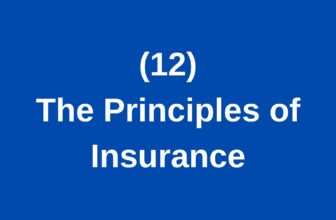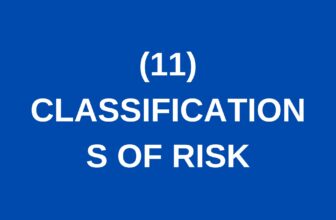9. Types of Risk Control: A Comprehensive Guide (FREE COURSE)
Introduction
Hello everyone and welcome to Chapter 8 of this course, “Types of Risk Control.” In the previous chapter, we delved into various risk management tasks and explained each one in detail. However, given that control is the most crucial aspect, I have dedicated an entire chapter to it. This chapter will explore the numerous ways to control risk effectively.
Understanding Risk Control
Risk control methods vary depending on the risk situation and its potential consequences. Therefore, controls are categorized into different types. The hierarchy of risk control is a useful framework to understand this categorization.
The Hierarchy of Risk Control
The hierarchy of risk control consists of the following stages, listed from the most effective to the least effective:
- Elimination
- Substitution
- Engineering Controls
- Awareness Controls
- Administrative Controls
- Personal Protection
An arrow on the right side of the hierarchy indicates the effectiveness of each type, with elimination being the most effective and personal protection being the least effective. Conversely, an arrow on the left side indicates the order of implementation, suggesting that elimination should be the first approach, followed by substitution, and so on.
Exploring the Hierarchy of Risk Control
Elimination
Elimination is the most effective risk control method. It involves completely removing the risk from the environment. However, this option can often be impractical or too costly. For instance, in our previous example of factory venting, elimination wasn’t practical because the job still needed to be done. In such cases, transferring the responsibility to a third party, while it may seem like elimination, is actually a form of risk reduction.
Substitution
When elimination is not feasible, the next best option is substitution. This involves replacing the hazardous element with something less dangerous. In our factory venting example, outsourcing the work to professionals is an example of substitution, as it transfers the responsibility and potentially reduces the risk.
Engineering Controls
Engineering controls involve using technology and engineering solutions to mitigate risks. For instance, ensuring that the ventilation system is capable of filtering hazards effectively is a form of engineering control. This approach focuses on designing safety features into the equipment and processes.
Awareness Controls
Controls that increase awareness involve educating those responsible for or involved in the risky task about the potential consequences and safety measures. This could include training programs and informational campaigns to ensure everyone understands the risks and how to manage them.
Administrative Controls
Administrative controls involve implementing policies and procedures to ensure safety. This might include safety protocols for how tasks should be performed, regular safety audits, and compliance checks.
Personal Protection
Personal protection equipment (PPE) is the last line of defense in the hierarchy. Although it is crucial for protecting individuals, it is the least effective method because it does not eliminate the risk itself but rather provides a barrier between the person and the hazard.
Categorizing Risk Control
Risk control methods can also be categorized into three main types:
Physical Control
Physical controls involve tangible measures to reduce risk. Examples include installing specific locks to prevent theft, placing cameras for surveillance, using sprinklers to combat fire, and maintaining machinery to prevent breakdowns.
Financial Control
Financial controls focus on transferring or mitigating risk through financial means. This can include purchasing insurance or outsourcing risky tasks to third parties, as seen in our example of outsourcing the bench job to professionals. Another example would be contracting a security firm to handle cash management.
Educational Control
Educational controls involve training and educating employees or clients to avoid or reduce risks. Developing a strong risk culture is essential for improving risk awareness and management. This can be achieved through ongoing education and awareness programs.
Conclusion
In conclusion, effective risk control requires a systematic approach, applying each type of control in order of their effectiveness. Understanding and implementing the hierarchy of risk control, along with categorizing risk controls into physical, financial, and educational measures, is key to managing and mitigating risks effectively.
If you have any questions or need further clarification, please do not hesitate to contact me. I am always happy to assist. Thank you for your attention, and see you in the next class!





